Discover 11 hidden attractions, cool sights, and unusual things to do in Ashton-under-Lyne (United Kingdom). Don't miss out on these must-see attractions: St Peter's Church, Hartshead Pike, and Dukinfield Junction. Also, be sure to include Grade I listed churches in Greater Manchester in your itinerary.
Below, you can find the list of the most amazing places you should visit in Ashton-under-Lyne (England).
Table of Contents
St Peter's Church
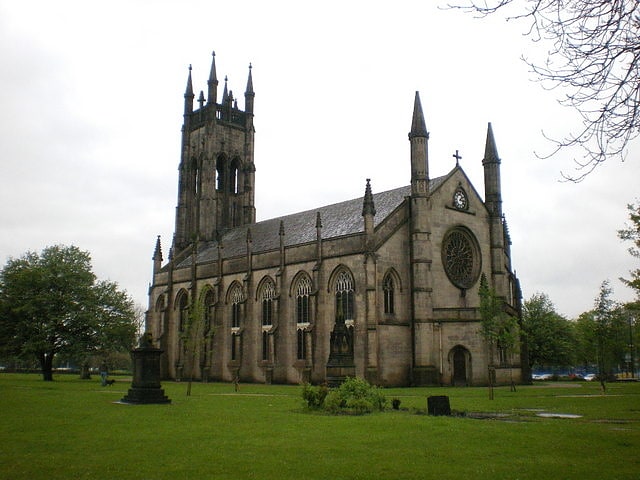
Church in Ashton-under-Lyne, England. St Peter's Church is in Manchester Road, Ashton-under-Lyne, Greater Manchester, England. It is an active Anglican parish church in the deanery of Ashton-under-Lyne, the archdeaconry of Rochdale, and the diocese of Manchester.
With four other local churches, it is part of the Parish of the Good Shepherd, Ashton-under-Lyne. The church is recorded in the National Heritage List for England as a designated Grade II* listed building. It is a Commissioners' Church, having received a grant towards its construction from the Church Building Commission. The authors of the Buildings of England series consider it to be a "large and ambitious" church. In the National Heritage List for England it is described as a "particularly imposing and elaborate example of a Commissioners' Church".[1]
Address: 6 A635, OL7 0BA Ashton-under-Lyne (Tameside)
Hartshead Pike

Hill in England. Hartshead Pike is a hill in Tameside in Greater Manchester, England, and its name is associated with the monument on its summit. It overlooks Ashton-under-Lyne, Mossley, Saddleworth, Lees and Oldham. On a clear day you can get views of Manchester, Cheshire and Snowdonia in Wales. Hartshead Pike Tower has been a Grade II listed building since 1967.[2]
Address: Hartshead Pike, Ashton-under-Lyne (Tameside)
Dukinfield Junction
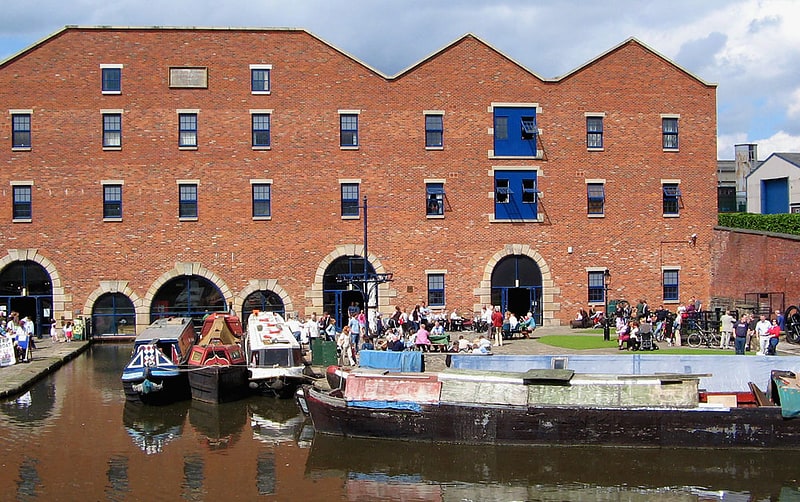
Dukinfield Junction is the name of the canal junction where the Peak Forest Canal, the Ashton Canal and the Huddersfield Narrow Canal meet near Ashton-under-Lyne, Greater Manchester, England. The area has been designated by Tameside Metropolitan Borough Council as a conservation area.
It is adjacent to Portland Basin, and the names are often used as synonyms by boaters, whilst locals refer only to Portland Basin. Strictly speaking, Portland Basin is the wide area on the main line of the canal. The arm under the junction bridge and the aqueduct over the River Tame were built by the Ashton Canal, and the junction with the Peak Forest canal was historically at the southern end of the aqueduct.[3]
Address: Portland Place, OL7 0QA Lancashire (Tameside)
Grade I listed churches in Greater Manchester
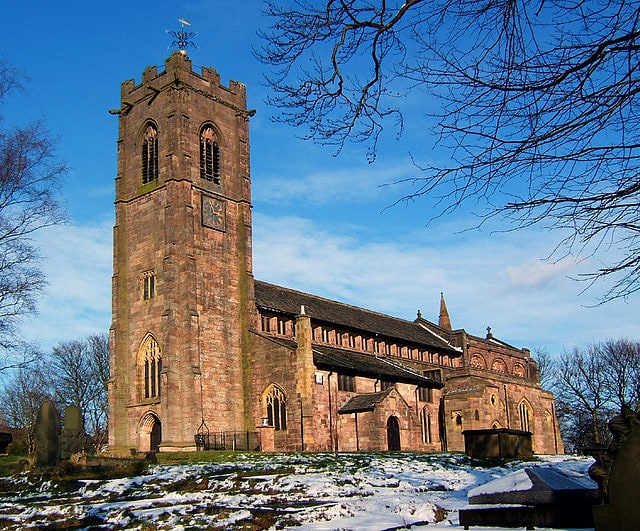
Greater Manchester is a metropolitan county in North West England. It was created by the Local Government Act 1972, and consists of the metropolitan boroughs of Bolton, Bury, Oldham, Rochdale, Stockport, Tameside, Trafford, Wigan and the cities of Manchester and Salford. This is a complete list of the Grade I listed churches in the metropolitan county as recorded in the National Heritage List for England. Buildings are listed by the Secretary of State for Culture, Media and Sport on the recommendation of English Heritage. Grade I listed buildings are defined as being of "exceptional interest, sometimes considered to be internationally important"; only 2.5 per cent of listed buildings are included in this grade.
Christian churches have existed in Greater Manchester since the Anglo-Saxon era, but no significant Saxon features remain in its listed churches, and the only Norman material is to be found in St Leonard, Middleton. The churches in this list fall into two main groups: those originating mainly from the medieval period, which are in Gothic style, and churches built during the 19th and 20th centuries, mainly in Gothic Revival style, with only a few churches created between these periods. Gothic churches originating from the medieval era include Manchester Cathedral, St Mary, Radcliffe, and St Werburgh Old Church, Warburton. Churches from the 19th century include some of the finest works of the leading architects of the period: George Gilbert Scott (St Mark, Worsley), Alfred Waterhouse (St Elisabeth, Reddish), George Frederick Bodley (St Augustine, Pendlebury), and Charles Barry (All Saints, Whitefield). Built between these periods was the Neoclassical church of St Ann, Manchester. All the above examples are Anglican churches. There are two Roman Catholic churches in the list: Joseph A. Hansom's Holy Name of Jesus, Manchester, and E. W. Pugin's All Saints, Urmston, and one church built for the Christian Scientists, the Edgar Wood Centre.
Greater Manchester is mainly urban, and is one of the most densely populated regions in Europe. In the second half of the 18th century, the Industrial Revolution played an important role in the growth and development of Manchester and its surrounding area, and industry continues to be a major part of the region's economy. There are few buildings surviving from before the Industrial Revolution, but many from the 19th and 20th centuries. The bedrock consists mainly of Carboniferous sandstones, including millstone grit, which is a major source of building material for the region's churches. The superficial deposits are of boulder clay, which provides material for making bricks.[4]
St John's Church
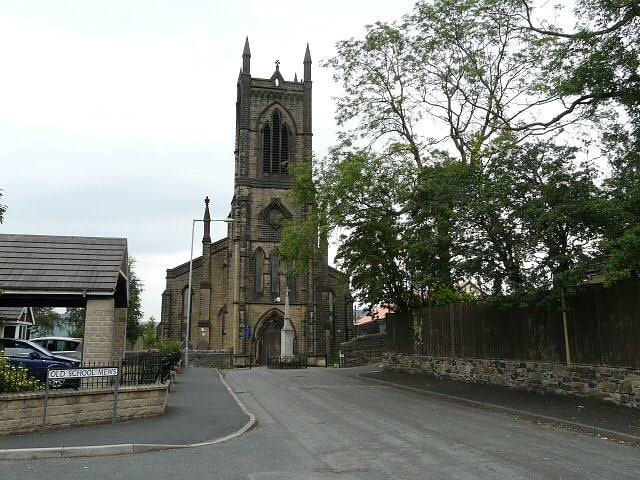
Commissioners' church in Dukinfield, England. St John's Church is in Oxford Road, Dukinfield, Greater Manchester, England. It is an active Anglican parish church in the deanery of Mottram, the archdeaconry of Macclesfield and the diocese of Chester. The church is recorded in the National Heritage List for England as a designated Grade II listed building. It stands in an elevated position at the top of a small hill.[5]
Ashton Canal

Canal in England. The Ashton Canal is a canal in Greater Manchester, England.[6]
Castleshaw Roman Fort
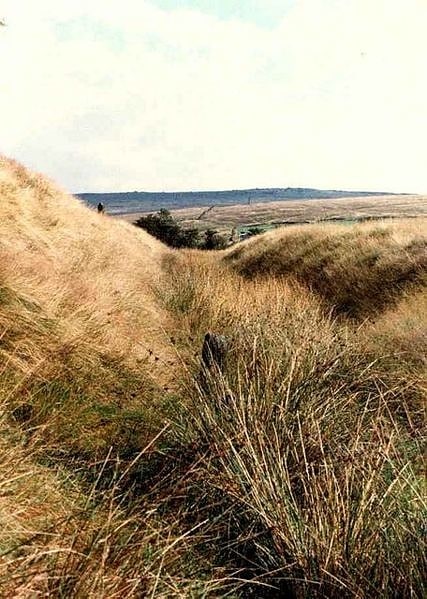
Castleshaw Roman fort was a castellum in the Roman province of Britannia. Although there is no evidence to substantiate the claim, it has been suggested that Castleshaw Roman fort is the site of Rigodunum, a Brigantian settlement. The remains of the fort are located on Castle Hill on the eastern side of Castleshaw Valley at the foot of Standedge but overlooking the valley. The hill is on the edge of Castleshaw in Greater Manchester. The fort was constructed in c. AD 79, but fell out of use at some time during the 90s. It was replaced by a smaller fortlet, built in c. 105, around which a civilian settlement grew. It may have served as a logistical and administrative centre, although it was abandoned in the 120s.
The site has been the subject of antiquarian and archaeological investigation since the 18th century, but the civilian settlement lay undiscovered until the 1990s. The fort, fortlet, and civilian settlement are all protected as a Scheduled Ancient Monument, recognising its importance as a "nationally important" archaeological site or historic building, and protecting it against unauthorised change.[7]
Tameside Hippodrome
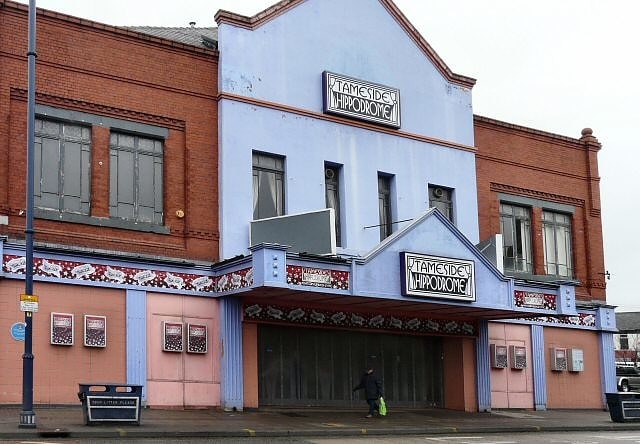
Theatre in Ashton-under-Lyne, England. Tameside Hippodrome is a theatre located in Ashton-under-Lyne, Greater Manchester, England.[8]
Outer Pennine Ring
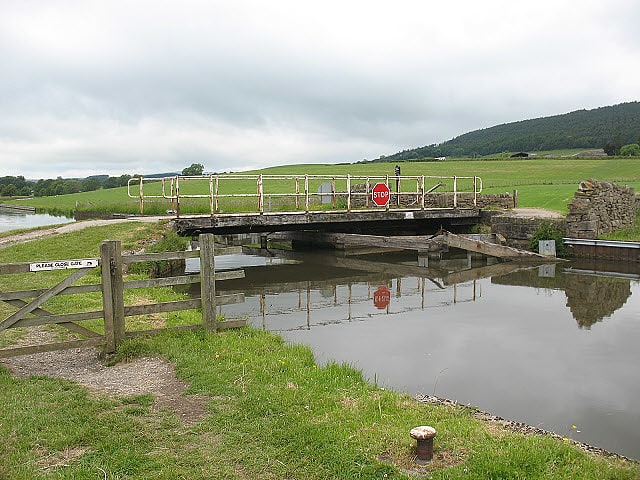
The Outer Pennine Ring is an English canal ring which crosses the Pennines between Manchester, Leeds and Castleford. Its route follows parts of eight canals, and includes the longest canal tunnel in England. The ring was completed in 2001, with the opening of the Huddersfield Narrow Canal. Much of the route is shared with the North Pennine Ring, which crosses the Pennines by a different route on the southern leg.[9]
St Michael and All Angels' Church

Building. St. Michael's Church is an Anglican parish church in Ashton-under-Lyne, Tameside, Greater Manchester, England. The church is a Grade I Listed Building. The church dates back to at least 1262, and a church on the site was mentioned in the Domesday Book. The church was rebuilt in the fifteenth century; however little of the previous church remains after it was rebuilt again in the nineteenth century and is still an active place of worship.[10]
Dukinfield
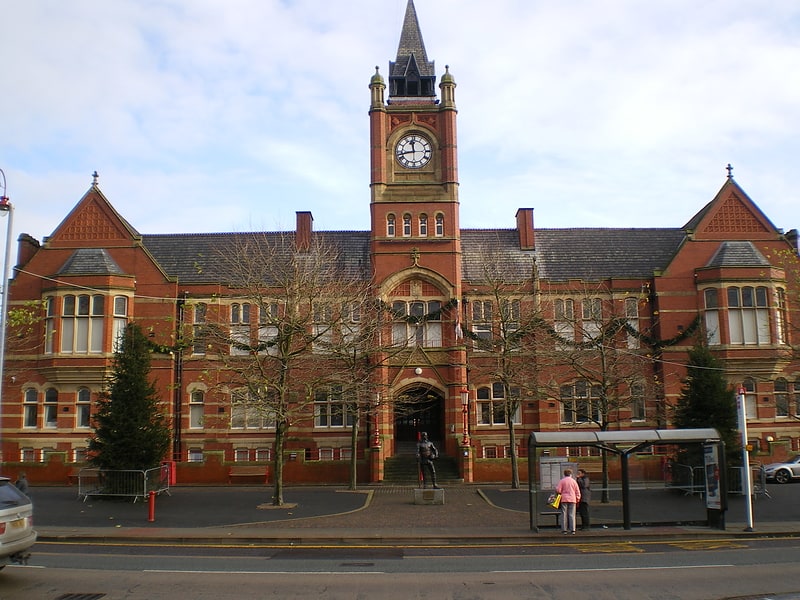
Town in England. Dukinfield is a town in Tameside, Greater Manchester, England, on the south bank of the River Tame opposite Ashton-under-Lyne, 6.3 miles east of Manchester. At the 2011 Census, it had a population of 19,306.
Within the boundaries of the historic county of Cheshire, the town developed as a result of the Industrial Revolution when it became the site of coal mining and cotton manufacturing.[11]